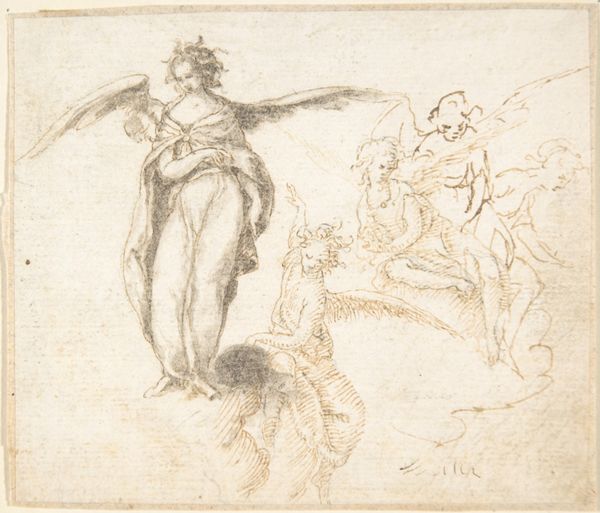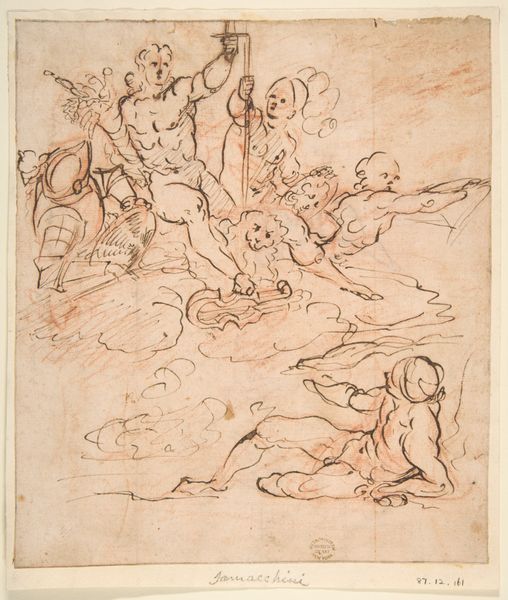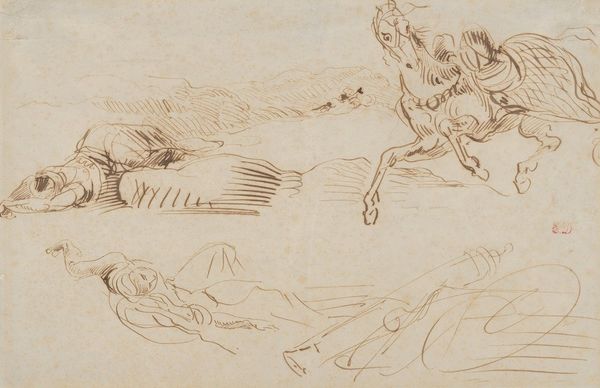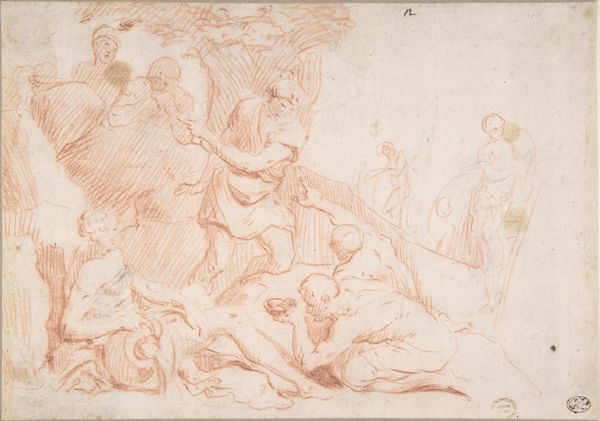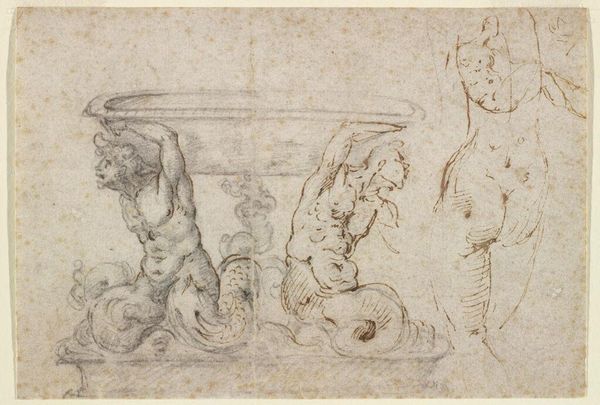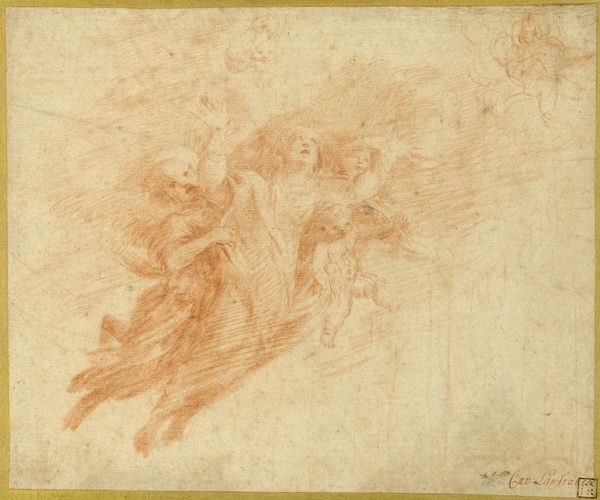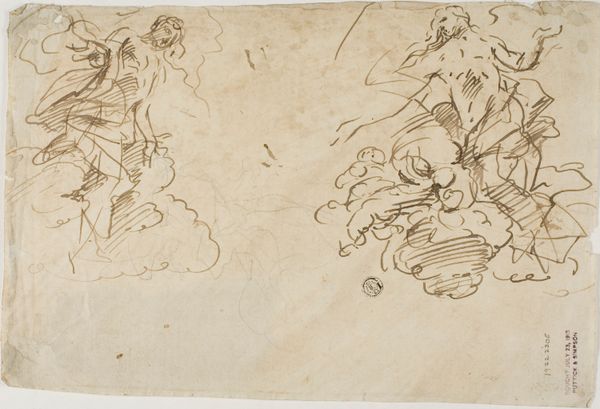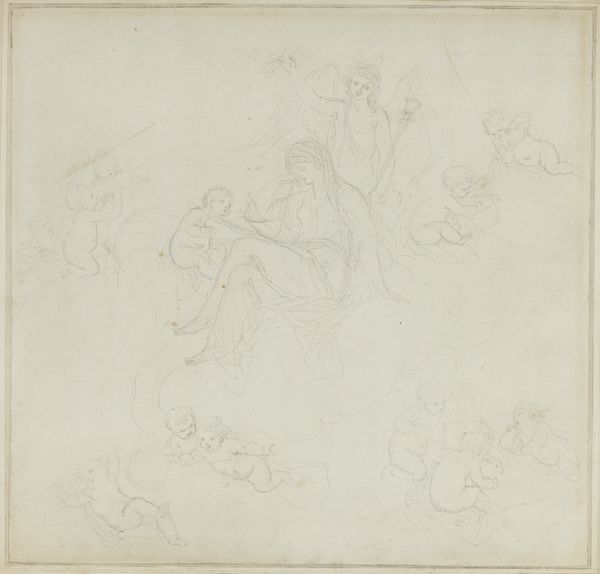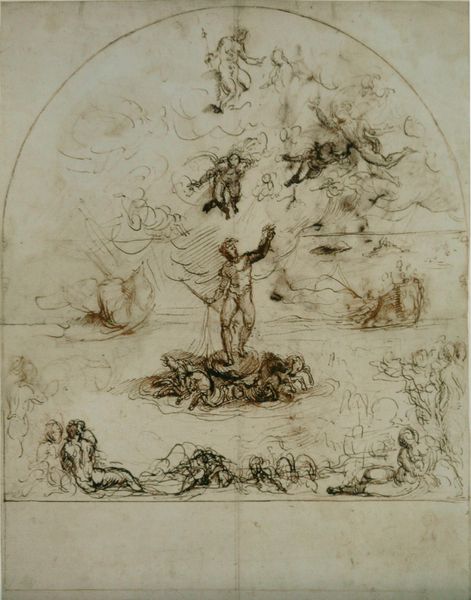
drawing, print
#
drawing
#
allegory
# print
#
figuration
#
11_renaissance
#
italian-renaissance
Dimensions: 10-1/4 x 10-13/16 in. (26.1 x 27.5 cm)
Copyright: Public Domain
Curator: Here we have Cesare Dandini's "Allegorical Figure of Painting," a drawing from sometime between 1596 and 1656, housed right here at the Met. What leaps out at you? Editor: Honestly, a sense of dreamy imperfection. The sienna ink, the sketched cherubs floating almost haphazardly... It feels less like a pronouncement and more like a fleeting idea captured on paper. Curator: Exactly! And think about what Dandini, steeped in the late Florentine Renaissance, is doing here. It's an allegory, of course – personifying painting itself. But not as some lofty goddess untouched by human hand. Editor: More like a woman caught mid-thought, surrounded by these playful cherubs that almost look like creative inspirations, bubbling up around her. I love that slight awkwardness. It’s much more human than many idealized portraits from that era. Almost self aware, and inviting the viewer to engage critically in the act of both perceiving the artist in progress. Curator: Indeed! There's an interesting push-pull. On the one hand, it's very much in line with the period's emphasis on skill, visible through these preliminary explorations, and academic representation, showcasing classical ideals. On the other, the lack of completion, the apparent immediacy, presents art as an active process. There’s a rejection of static perfection which would have flown against traditional representations of authority through visual imagery, making this particularly striking for the period it hails from. Editor: It really speaks to how the role of artists changed – shifting away from being seen solely as craftsman and starting to claim their position as thinkers and visionaries, shaping culture in meaningful ways. Curator: It’s funny, isn't it? Centuries later, these sketches resonate so powerfully, reminding us of art's inherent vulnerability and the messy, human process behind every masterpiece. It prompts a whole series of ideas about why images exist in public places at all, what it might mean for an artwork to feel "complete", and the conditions needed to invite in a wider audience. Editor: Totally! So next time you find yourself intimidated by the polished facade of the art world, remember this: even allegories start as sketches.
Comments
No comments
Be the first to comment and join the conversation on the ultimate creative platform.

